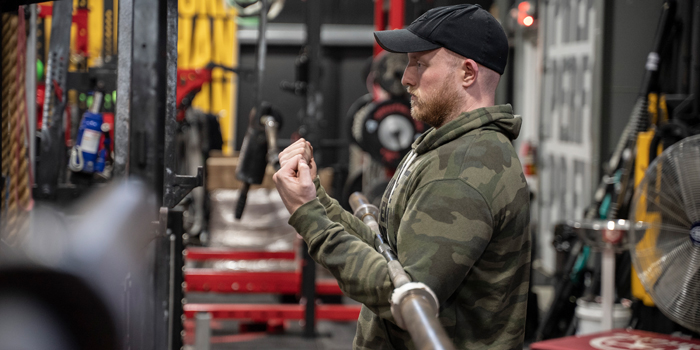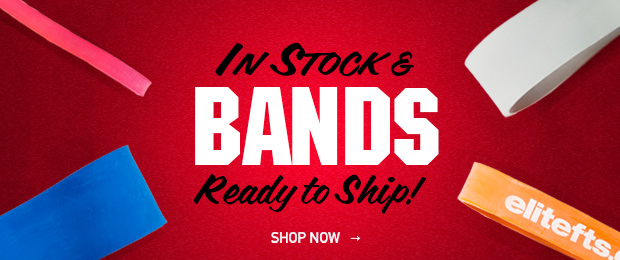
The squat is one of the most beneficial and necessary movements for the high school athlete. Few movements will build as much strength and resiliency as the squat and should be a staple exercise of any successful high school strength training program.
High school-aged athletes are adaptable and should learn all of the nuances of how to perform a safe, and effective squat pattern. Regardless of the variation being used, they should have a firm grasp on several different ones since the underlying principles and cues are similar.
These athletes should be able to successfully perform or strive to perform, a barbell box squat, a barbell front squat, and the barbell back squat, if given appropriate instruction of course. An often-overlooked squat variation that should be held in this constant rotation of exercises as well as being the first option when introducing these young, impressionable athletes to the squat pattern is the Zercher squat. High school sport coaches seem to also love it because they think it looks “tougher”.
I cannot count the number of times the Zercher squat has helped me better prepare the younger high school athletes I train and serve as a fundamental teaching tool for the squat.
Zercher Squat Benefits and Setup
The Zercher squat is a front-loaded squat variation where the barbell is loaded in the crook of the elbows. Holding the bar in this position will put more stress on the muscles of the upper back and midsection. The upper back and midsection are constantly in need of development with this specific age group.
When setting up for the Zercher squat, total body tension must be created. Once the barbell is wedged securely into the elbows, the lifter will keep their hands separated, squeezing them as tightly as possible. This will create an irradiation effect creating tension down from the fists throughout the body, not allowing for a single link of weakness. From there the squat cues are essentially the same as the standard squat.
This position also works well for these athletes because it helps teach the squat in a progressive manner. It seemingly makes the squat more natural, or less complex, allowing the athlete to reach depth easier, hit the big cues of knees out, hips back, and forces them to maintain a strong, upright posture. If the posture isn’t maintained throughout the lift then the lifter will fail, which takes me to my next point.
Zercher Squat Safety
The Zercher squat is initially safer than the back-loaded variations because if your athletes do fail, they just drop to the bottom and let the safety pins do their jobs. I understand it’s technically the same process for the barbell back squat, but if you are reading this and thinking back to a time where you saw a high school football player fail on the back squat, then you’ve seen the panic take over and them just completely abandon all care for their body, their spotters’ body, or the equipment as they dump the barbell in whatever direction they please.
Regardless of how much education and safety you preach to the kids, the first time they get down into the hole with a significant amount of weight on their back and realize that they aren’t going to come up, it's a scary feeling and can lead to a lot of poor decisions. While failing on the Zercher squat is just as embarrassing, there isn’t a barbell loaded on the spine and athletes have told me they felt more in control during those tougher situations—assuming you have the safety pins set up to a manageable height for when shit hits the fan.
Failing properly is a lesson in and of itself and should be discussed and coached to an extent even. Getting the athletes comfortable with this idea with the Zercher squat is a great initial lesson.
Eliminate the Ego
An additional thought that I find helps with the Zercher squat is that it destroys any lifting ego that the athlete may have previously held. When athletes perform the back squat, especially high school guys, they tend to lift with their ego and focus more on the weight of the barbell and less on the execution.
The brutality of holding the barbell in the Zercher position almost always immediately fixes that! Guys are not jumping up in 90-pound increments with the Zercher squat and surprisingly more focus is on the technique initially. If not, at least we know failing is safer.
The Bar Pad
I know this will come up and is the hottest take when performing the Zercher squat if I allow them to use the dreaded bar pad. The first thing to address is I do not and would not recommend using the bar pad for the back squat. The athlete needs to learn how to set up into the barbell utilizing their upper back and staying strong in this position. Most athletes who tell me that squatting with a bar hurts their neck at school is because that’s where they are placing the bar! Education of the setup is first, and this cannot be done properly by placing a thick, soft piece of foam that will change and cause the bar to be loaded incorrectly, ultimately causing everything with the squat to be performed incorrectly.
Now on the other hand when performing the Zercher squat, I could care less if they use the bar pad or not. Like arguing with your spouse, you need to pick your battles. If using the bar pad makes the athletes more willing to perform the exercise and load it heavier, then so be it, and may the lifting gods have mercy on me.
Zercher Squat Variations
Let's get more into the exercise itself and different variations to implement with the high school athlete.
Zercher Pin Squat
Performing the Zercher squat off of pins is a great introduction to the movement and easy for the athletes to execute. Setting up on pins will allow the athlete to pay more attention to their set up and reaching depth will not be an issue since they will always start from the pins.
You can perform these from a set of low pins, really working on hip mobility and depth, or perform off of slightly higher pins focusing on overloading the trunk and upper back strength.
Zercher Box Squat
Once comfortable with the Zercher position, progressing to the box squat will be next. They will be holding the barbell for the entirety of the set but still not have to worry about meeting depth, as long as they are performing the box squat correctly.
Zercher Squat
Going into the full squat, puts everything together that you’ve been working on. The athletes will have to meet depth on their own and ensure a solid position as they go through the exercise.
Conclusion
The Zercher squat is a coach’s best friend when working with a younger, less experienced high school team. The exercise gives you multiple benefits and is the best of both worlds with a focus on getting stronger. It's also initially a safer alternative to help you teach the barbell squat in the long term.
Brandon Holder, CSCS, is a strength and conditioning coach and the Director of Performance at FASST Sports Performance in Winchester, VA. His mission is to help young athletes and individuals of all levels to live their strongest lives possible. He specializes in youth athletic development as well as has coaching experience in the collegiate and tactical setting. Brandon has previously competed in powerlifting and strongman and holds certifications through US Weightlifting and US Track & Field, among others.











Some people seem to run into nerve damage from heavy Zerchers, so some padding with a towel may be useful. For some (such as myself), high bar squats without a pad mean steel on bony shoulder.